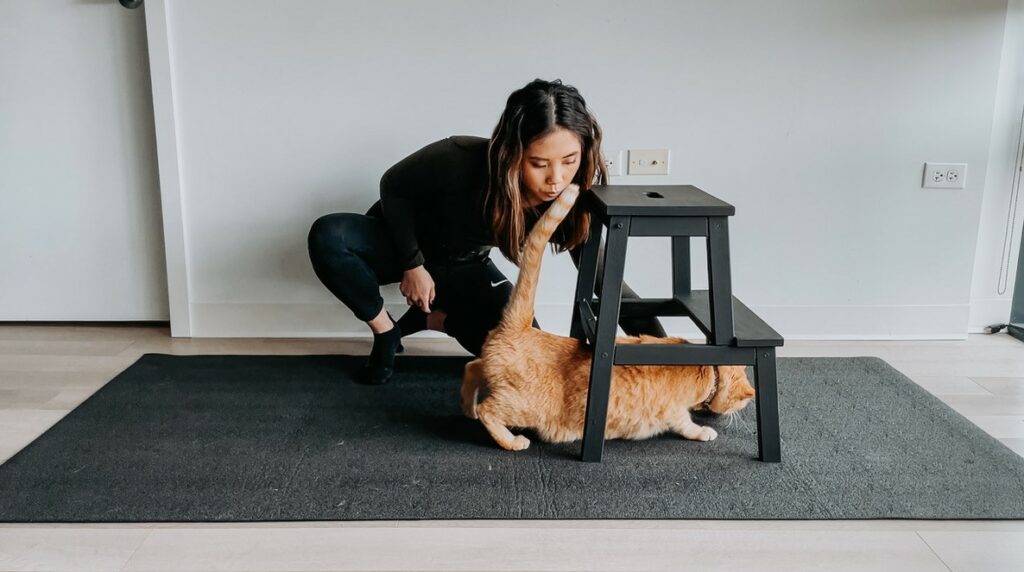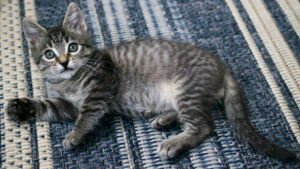— Guest post by Dr. Natasha Bui, PT, DPT, CCRT, Amicus Animal Rehabilitation
Did you know that cats are actually pretty great physical therapy patients? Hear me out…
Cats, just like dogs, have common orthopedic and neurologic conditions that, if left untreated, can significantly affect their quality of life, mobility, and age expectancy. After working with many cats over the last 3 years as an animal physical therapist (plus my own two senior kitties), I’ve learned so much regarding how differently we sometimes need to approach rehabbing our kitties and would love to share some knowledge in order to keep our furry felines healthy and moving!
Common 🐱PT Conditions
Firstly, I’d like to share with you what we most commonly see and treat in kitties ranging from orthopedic to neurologic:
- Strokes
- Spinal cord injuries
- Fractures or ligament injuries (due to trauma such as being hit by car or from jumping)
- Hip dysplasia (usually congenital, meaning their hip sockets do not form properly prior to or at birth)
- Patellar luxations
- Muscle strains
- Post-amputations
- General arthritis (due to age or being overweight)
Patience, Patience, Patience
Unlike dogs, it is rather rare to get a cat to do 30 straight minutes of rehab exercises without them getting bored, distracted, or disengaged. To work around this, here are some ideas to get them to participate in their PT:
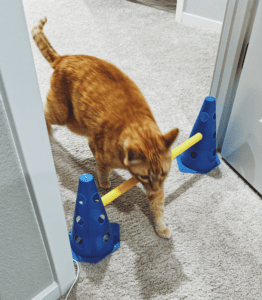
- Turn your home into a rehab obstacle course (i.e. cavaletti poles in doorways, feeding on the sofa or mattress)
- Using a variety of high-value treats for enticement
- Using unconventional treats (like catnip!)
- Using interactive cat toys during rehab (cat dancer or string wands to chase, rolling fuzz balls or springs, using a laser toy)
- Wait until meal time to do PT to increase motivation
- For our weight-conscious cats, use their meal portion in place of treats used during rehab
Accessibility is 🔑 for Maintaining Healthy Joints & Independence
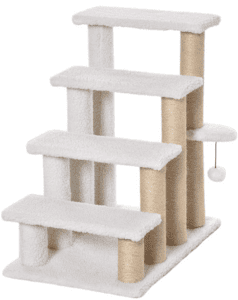 Never let age get in the way of them climbing up to their favorite spot on the window sill or the tip top perch of their beloved cat tree! Even with arthritis and/or decreased strength, there are many ways to help preserve their joints by lessening the impact of jumps as well as allowing them to safely be able to continue getting to their favorite spots in your home:
Never let age get in the way of them climbing up to their favorite spot on the window sill or the tip top perch of their beloved cat tree! Even with arthritis and/or decreased strength, there are many ways to help preserve their joints by lessening the impact of jumps as well as allowing them to safely be able to continue getting to their favorite spots in your home:
-
- Placing pet stairs, pet ramps, or even a low ottoman or foot stool near surfaces where they typically jump
- Elevating food and water bowls to reduce stress on their neck/spine
- Add plenty of traction such as non-slip runners or rugs all around your home, especially in high-traffic areas, to prevent slipping/falling
- Keep your kitties’ nails at a good length to prevent extra stress on their toe bean joints
- Modifying your litter box:
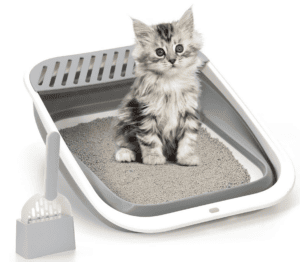
- Switch to a low-lip litter box for easier entry & clearance
- If you are not able to switch out your high litter box, add a small box or step in front of it so they can step up and into the box
- Opt for an extra large sized litter box for improved mobility while pottying
- Switch to a light-weight and airier litter consistency to decrease stress on their front limbs when they dig/cover their 💩
Supplemental Pain Management & Joint Health
However, due to how unregulated pet products can be and the safety risks that both of these types of therapies carry, please consult with either an animal physical therapist and/or your veterinarian to determine if your cat is eligible as well as their recommendation(s) on which specific brands to purchase.
One of the most common symptoms of arthritis is stiffness after getting up from a long nap as well as more noticeable symptoms when the temperature drops. A great way to combat this is a pet-safe heating pad (I promise your kitty will definitely NOT protest to this! 😻)
Favorite PT Exercises 💪🏼
Lastly, I’d love to share with you some of my favorite, general exercises that target most major joints that are prone to arthritis as well as areas that typically get stiff/less mobile with age: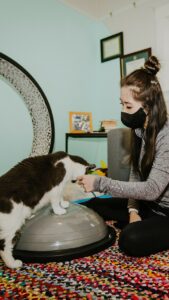
- Backwards walking
- Cavaletti stepovers
- Side stepping
- Walking over an unstable surface (i.e. bed, couch, etc.)
- Spinal extension via crouching or vertical stretching
- Alternating right/left circling or figure 8s
About Amicus Animal Rehabilitation
Amicus Animal Rehabilitation provides evidence-based physical therapy and customized rehabilitation programs to help your best friend, whether feline or canine, achieve the highest function & quality of life possible. To learn more, visit amicusrehab.com.

